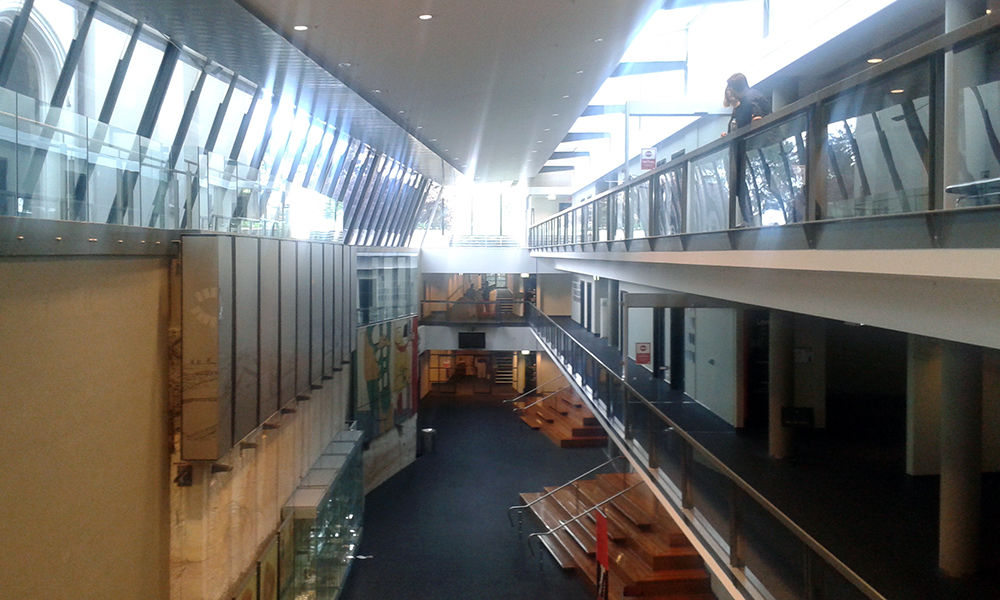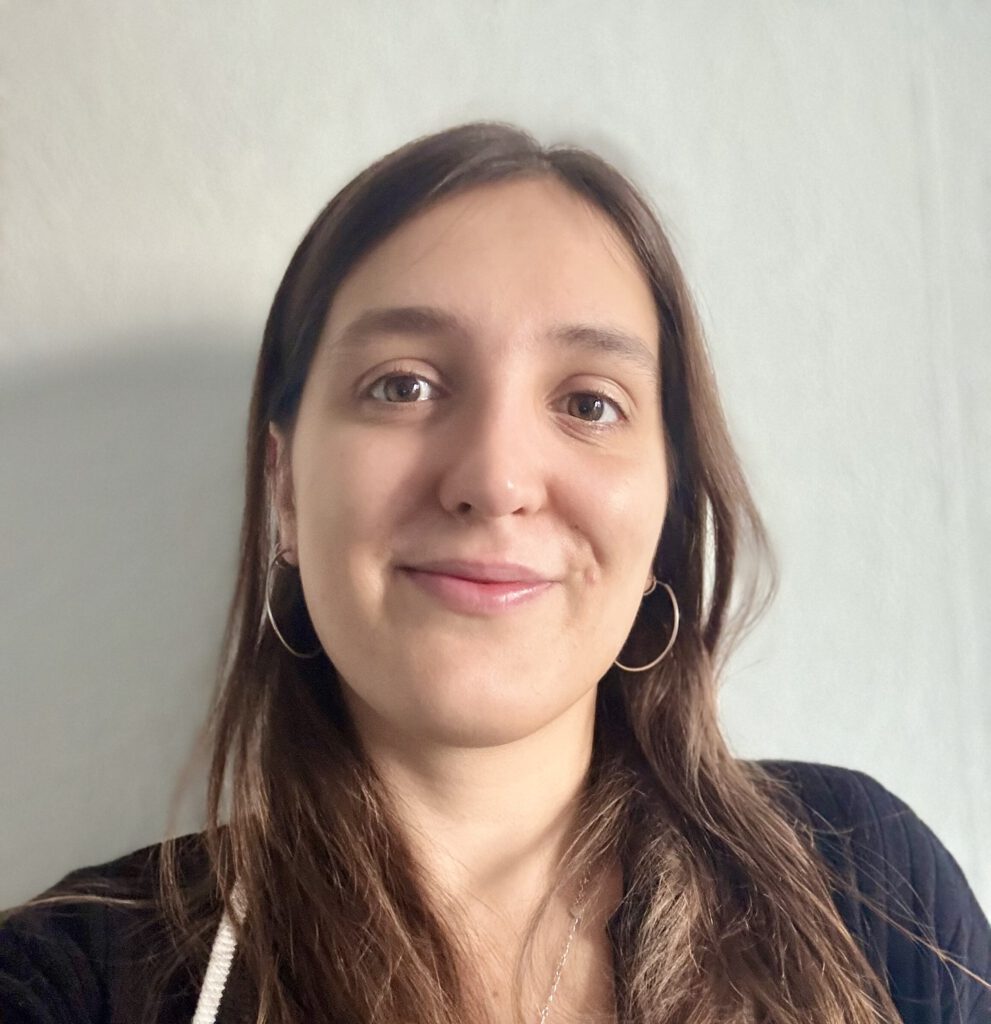My name is Robin Prischink. I have been studying music education at the mdw since 2010 and in 2013 began studying instrumental and vocal pedagogy as well. My main instrument is percussion (in popular music), and between the completion of my music education degree in January and the beginning of my student teaching in September, I had the opportunity to spend a semester at the other end of the world.
I would like to preface my remarks by saying that it was an incredibly enriching experience and I am so glad I did it. The city, the culture, the university, and the students all were tremendous, I can recommend to anyone interested in doing a semester abroad to go to the effort and take advantage of this once-in-a-lifetime chance. But I also have to note right from the outset that there is a significant amount of organisational work and financial expenditures involved.
The application process
I applied in February 2016 for the semester from March to June 2017. I probably have no special organisational talents, but I would estimate that the number of hours this involved – from obtaining the initial information and making the application video to organising the travel to and from Australia – totalled well over a hundred. The mdw’s Office of International Affairs was always very helpful, but some things simply take time. I applied to Melbourne and Sydney and was accepted to both universities, but largely due to the somewhat problematic communication with the university in Melbourne, I ended up choosing Sydney, and I am very happy with this decision.

In producing the application video, I followed the guidelines of the respective university and together with two fellow students tried to create a video that was as varied as possible. The universities also required a personal statement and letters of recommendations from two professors. I took a lot of time for this and despite having studied English, I had all texts checked by a native English speaker. I cannot say how important the quality of the individual elements of the application was for the respective university, but in my case it worked.
A great challenge was choosing my classes, although once I got there, everything was different anyway. Transferring credits was also not a problem.
Basically, anyone considering a semester abroad should be aware that doing this outside of the EU is always more complicated than a semester organised through Erasmus. Because the University of Sydney has a partnership with the mdw, there were no student fees, but there was also no allowance or anything like that. To qualify for a federal grant, one has to have studied for at least six semesters and fulfil an entire list of additional requirements, which is why I received no financial aid from the government.
However, the student visa also included a work permit, and because the wages in Australia are quite high, I was able to earn some additional money as a bicycle courier. But the cost of living is also very high in Sydney, so it is necessary to have a good financial plan. I would plan on spending at least 450 AUS $ a week for living expenses.
Studying in Sydney
But enough of the difficulties; now on to the important thing: surfing! Just joking; I mean, of course, studying at the Sydney Conservatory, or Con for short. Before classes started, there was an Orientation Week on the main campus for all first semester and international students. It was an impressive experience for me, as the campus there is enormous and the centre for everything from sports to living and studying, of course. There are even two bars on campus. The events of the O-Week helped me a great deal in finding my way around as well making friends, with whom I spent a lot of time during the rest of the semester. But since the Con is quite far from campus, I didn’t spend much time on campus.

The first period at the Con was a bit rough because there were some communication problems between Sydney University and the Con. However, my teachers and fellow students were very helpful right from the beginning. The size of the jazz department at the Con is comparable to that of the mdw’s ipop (Department of Popular Music), but it easier there to establish contact with fellow students. This has several reasons: 1. The schedule is planned centrally, with classes held only between 10 a.m. and 5 p.m., which increases the chance of your fellow students being there the same time you are; 2. The Con is built in such a way that there is a main area where students tend to congregate; and 3. There is one class that all Jazz BA students are required to attend: Concert Practice.
Most of my classes were very good. I was able to choose freely from the entire offerings of the university and decided on the following classes:
- Practical Jazz Studies (main course of study)
- Small Ensemble
- Gamelan Ensemble
- Rhythm Awareness
- Jazz Ear Training
My main course of study was divided into four areas: Individual lessons in my instrument, Impro Ensemble, Concert Practice, and Rhythm Section Workshop. My lessons were similar to those here, but since I did not have to perform an exam (or at least we initially believed this, but more on this later), I could work on my own chosen emphasis. In terms of equipment, the ipop is ahead of the Con, but a plus in Sydney is the well-equipped computer rooms with iMacs, studio headphones, and midi keyboards at every workplace. Practising was easier there than in Vienna, even though the standard practice rooms were quite small and often rather shabby, and only some had a piano. New for me were ensemble rooms, in which I often practised; only Rhythm Section students had access to these rooms, which were equipped with drums, good pianos, and amps. Students could sign up for a practice time on a calendar.

As I have mentioned, Concert Practice was a highlight of my studies there. Attendance was mandatory for all jazz students, although this was not strictly enforced. The first half of the semester was organised so that one could sign up on a list and then put together a set of about 20 minutes. In this way, you heard three ensembles every week, and every session was followed by a feedback round with all the students and one teacher. I experienced some incredibly fine performances by my fellow students there! There were arrangements of existing pieces as well as original works by students. The feedback rounds were also very educational because you gained a good sense of how various instrumentalists perceived the performances. What does a guitarist say to another guitarist? What does a pianist say to a drummer? The feedback was above all supportive but could also be quite critical.
In the Small Ensemble, every student had to bring a lead sheet for everyone to work on together as well as a written-out arrangement that could be played from sight more or less with no explanation. In the first few weeks, our ensemble director brought some of his own tunes with him.
Another special highlight for me was the Gamelan Ensemble, in which we studied and played Indonesian – or to be more precise: Balinese – music. Initially I was told that I could not attend the class, but I went to the first session anyway, and since two other students didn’t turn up, I ended up with a spot. In this class, we learned the music according to the Balinese method: the teacher plays a phrase and the students play it back with no music.
Rhythm Awareness was also an exciting class, taught by the director of the percussion department. Here, we simply clapped and sang, and in this way, we learned about various rhythmic concepts. What fascinated me about this was the broad stylistic range, encompassing everything from Joni Mitchell and Bob Marley to jazz and contemporary classical music. This class was for jazz students as well as those studying composition and producing, which resulted in a stimulating mixture.
Jazz Ear Training was unfortunately nothing special, but it did motivate me to spend some of my free time with ear training.
The classes were generally more work than most of those at the mdw, but it was still not difficult to pass them, and the grade was not included in the credit transfer anyway. To complete my main course of study, I was surprised to learn that I had to play a recital at the end of the semester. But this was a good challenge, and I quickly put together a good ensemble and through the rehearsals was able to establish better contacts to these local students.

Away from the university
My studies left little time for exploring the country. There are several attractive destinations very near to Sydney, especially the Blue Mountains and the beaches north and south of the city. I spent a week in Tasmania in the Easter break, which I can heartily recommend. I also took advantage of a long weekend for a trip to Melbourne. My time and my budget did not allow for travel to destinations farther away, however. But it is always good to save something for the next visit.
Finally, I want to say that I greatly enjoyed these four months in Sydney and can recommend this city to anyone. The city, university, people, food, and sea are all really top-notch! And for everything else, the Australian motto applies, which one hears constantly in everyday conversation: No worries!
Are you a mdw student and interested in spending a semester or year at one of our partner institutions?






